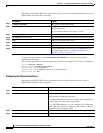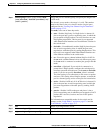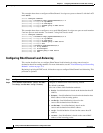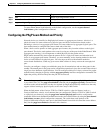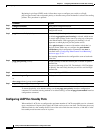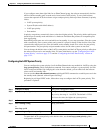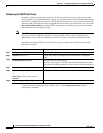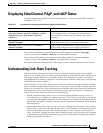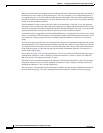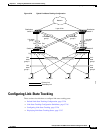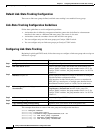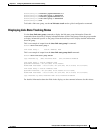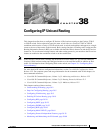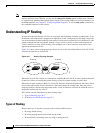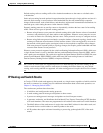
37-24
Catalyst 3750-E and 3560-E Switch Software Configuration Guide
OL-9775-02
Chapter 37 Configuring EtherChannels and Link-State Tracking
Understanding Link-State Tracking
When you enable link-state tracking on the switch, the link states of the downstream ports are bound to
the link state of one or more of the upstream ports. After you associate a set of downstream ports to a
set of upstream ports, if all of the upstream ports become unavailable, link-state tracking automatically
puts The associated downstream ports in an error-disabled state. This causes the server primary interface
to failover to the secondary interface.
If the distribution switch or router fails, the cables are disconnected, or the link is lost, the upstream
interfaces can lose connectivity. When link-state tracking is not enabled and the upstream interfaces lose
connectivity, the link state of the downstream interfaces remain unchanged. The server is not aware that
upstream connectivity has been lost and does not failover to the secondary interface.
An interface can be an aggregation of ports (an EtherChannel), or a single physical port in access or trunk
mode, or routed ports. These interfaces can be bundled together, and each downstream interface can be
associated with a single group consisting of multiple upstream interfaces, referred to as a link-state
group.
In a link-state group, the link states of the downstream interfaces are dependent on the link states of the
upstream interfaces. If all of the upstream interfaces in a link-state group are in the link-down state, the
associated downstream interfaces are forced into the link-down state. If any of the upstream interfaces
in the link-state group is in the link-up state, the associated downstream interfaces can change to or
remain in the link-up state.
For example, in Figure 37-6, downstream interfaces 1 and 2 on switch A are defined in link-state group 1
with upstream interfaces 5 and 6. Similarly, downstream interfaces 3 and 4 on switch are defined in
link-state group 2 with upstream interfaces 7 and 8.
If the link is lost on upstream interface 6, the link states of downstream interfaces 1 and 2 do not change.
If upstream interface 5 also loses link, downstream interfaces 1 and 2 change to the link-down state.
Downstream interfaces 3 and 4 do not change state.
You can recover a downstream interface link-down condition by removing the failed downstream port
from the link-state group. To recover multiple downstream interfaces, disable the link-state group.



